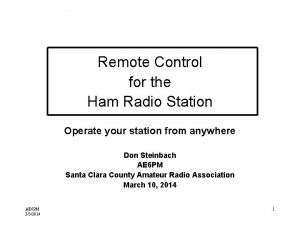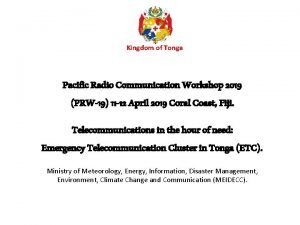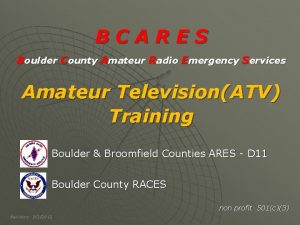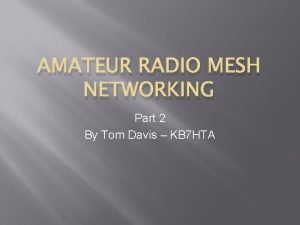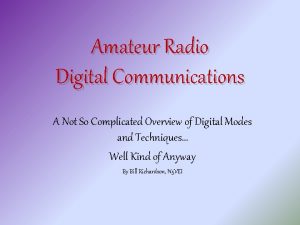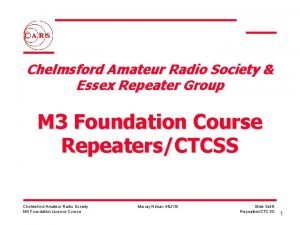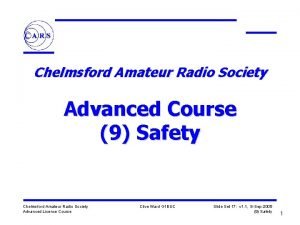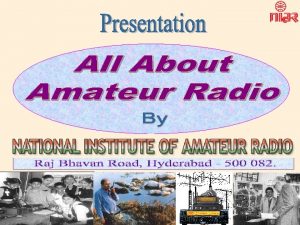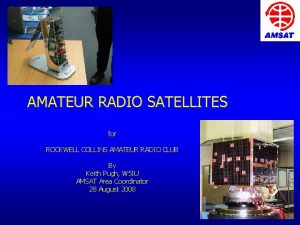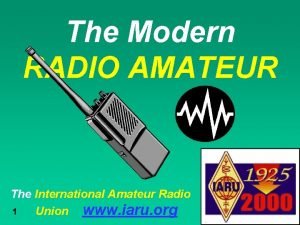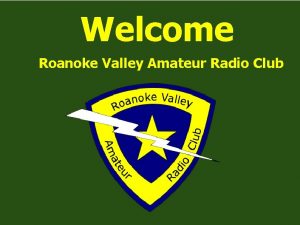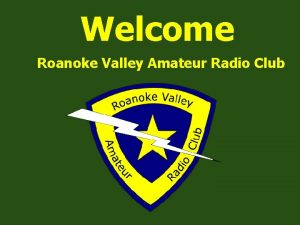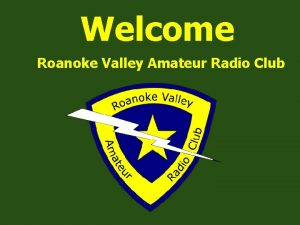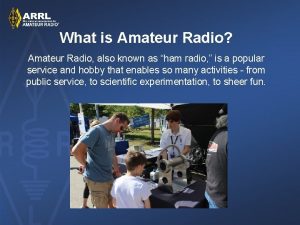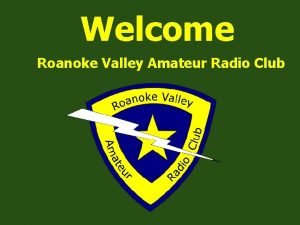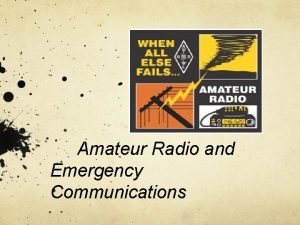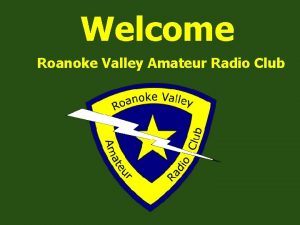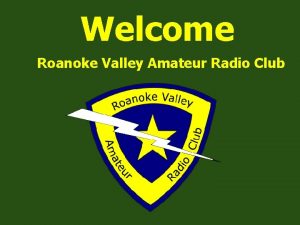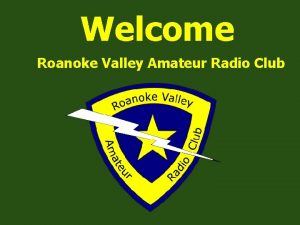When all else fails Amateur Radio works Woody














- Slides: 14

“When all else fails, Amateur Radio works!” Woody Howse K 7 EDH MIRO Volunteer Chairman Mercer Island Radio Operators (MIRO)

Today’s Agenda Overview of ham radio MIRO organization How to communicate Emergency operations Getting to know your radio Information sources

Welcome to Ham Radio Amateur radio is a “hobby with a purpose” - a valuable asset during times of emergency when traditional communication systems break down. Mandated by the Federal Communications Commission, one of the key purposes of Amateur Radio is to provide a “voluntary noncommercial communication service” to assist public safety agencies in the event of a disaster or as required. (47 CFR 97. 1(a); 97. 401(a)).

Ham Radio History Radio technology has been around for over 100 years Amateur radio operators have been involved, and innovating, from the very beginning “Amateur” has the same connotation as “amateur athlete”, meaning we cannot accept payment for our services There are numerous opinions on where the term “Ham” originated – but it’s not an acronym Ham operators have always been involved in global and local disaster aid with wireless communications Communications skills were incorporated from professional telegraphy and military communications training

Ham Talk It’s a hobby, but also a fraternity. A ham call sign is like a secret handshake, and we have our own lingo Many terms came from abbreviations or “short codes” from the days of Morse code. Q Signals – QSO, QRM, QRN, QSL, QRT Abbreviations - 73, CUL, BTU, TNX, etc. Prosigns – SK, AR, etc.

Mercer Island Radio Operators MIRO was formed in 1993 to provide emergency communications backup to the city MIRO is an ARES/RACES organization You are welcome to join MIRO, but not obligated You are welcome to use the MIRO repeaters at any time except during a drill or a true emergency in which you are not participating Visit our website for more info! http: //MIRO. cmivolunteers. org

Resources you may use MIRO repeaters 147. 160 MHz, +0. 6 MHz offset, 146. 2 Hz tone 440. 150 MHz, +5 MHz offset, 103. 5 Hz tone MIRO monthly practice net Other local repeaters, if you behave nicely Simplex frequencies, within certain allocation boundaries – MIRO uses 147. 440 MHz You can download the repeater and simplex frequency lists from: http: //MIRO. cmivolunteers. org

Getting into a Conversation On VHF/UHF to look for a QSO: “<Your callsign>, monitoring…” If you want to talk with someone specific, give their call sign followed by “This is <Your callsign>” To join a QSO: “Break”, wait for acknowledgement and then identify yourself It’s all about respect for others and good behaviors MIRO monthly practice net is a good exercise

ITU Phonentic Alphabet A. B. C. D. E. F. G. H. I. J. K. L. M. Alpha Bravo Charlie Delta Echo Foxtrot Golf Hotel India Juliet Kilo Lima Mike A. B. C. D. E. F. G. H. I. J. K. L. M. November Oscar Papa Quebec Romeo Sierra Tango Uniform Victor Whiskey X-ray Yankee Zulu 1 2 3 4 5 6 7 8 9 Ø One Two Three Four Five Six Seven Eight Nine(r) Zero You can practice by spelling out road signs when you drive

Using a Repeater Don’t talk for very long or the repeater will time out. 1 to 2 minutes is a good rule of thumb. If you have more to say, say “Break” and un-key the microphone for a second or two. During a break, you should also listen for other stations who might want to break in. Identify yourself with your call sign at least every 10 minutes and also when you sign off.

Ending a QSO Always identify yourself by call sign and then say “Clear” If you want to invite others for another QSO, say “Clear and Monitoring”

Emergency Communications MIRO Emergency Net Procedures Message Passing Formal – NTS Radiogram Informal – “Tactical”

Setting Up Your Radio During our workshop today we will demonstrate creating a cheat sheet for setting up radios quickly Basic Tasks: Simplex Frequency Repeater Frequency, Offset, and Tone Memory Storage and Recall

For More Information www. arrl. org www. qrz. com http: //MIRO. cmivolunteers. org ü Request an account from Woody Howse or Dave Uhler. ü Full access includes member roster lists, member profiles and other protected documents.
 He never fails meaning
He never fails meaning When all else fails standardize
When all else fails standardize Amateur radio remote control
Amateur radio remote control Ham radio in tonga
Ham radio in tonga Bcares
Bcares Ubiquiti link calculator download
Ubiquiti link calculator download Amateur radio digital communications
Amateur radio digital communications Chelmsford amateur radio society
Chelmsford amateur radio society Chelmsford amateur radio society
Chelmsford amateur radio society Chelmsford amateur radio society
Chelmsford amateur radio society Amateur radio mesh network
Amateur radio mesh network Remains simon armitage context
Remains simon armitage context She's all states and all princes i nothing else is
She's all states and all princes i nothing else is Streetworks revision
Streetworks revision Monocarpic plants
Monocarpic plants


